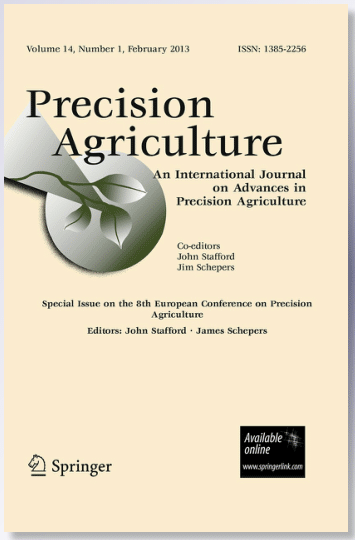Cover crops and reduced tillage are two key climate smart agricultural practices that can provide agroecosystem services including improved soil health, increased soil carbon sequestration, and reduced fertilizer needs. Crop residue carbon traits (i.e., lignin, holocellulose, non-structural carbohydrates) and nitrogen concentrations largely mediate decomposition rates and amount of plant-available nitrogen accessible to cash crops and determine soil carbon residence time. Non-destructive approaches to quantify these important traits are possible using spectroscopy.
he objective of this study was to evaluate the efficacy of spectroscopy instruments to quantify crop residue biochemical traits in cover crop agriculture systems using partial least squares regression models and a combination of (1) the band equivalent reflectance (BER) of the PRecursore IperSpettrale della Missione Applicativa (PRISMA) imaging spectroscopy sensor derived from laboratory collected Analytical Spectral Devices (ASD) spectra (n = 296) of 11 cover crop species and three cash crop species, and (2) spaceborne PRISMA imagery that coincided with destructive crop residue collections in the spring of 2022 (n = 65). Spectral range was constrained to 1200 to 2400 nm to reduce the likelihood of confounding relationships in wavelengths sensitive to plant pigments or those related to canopy structure for both analytical approaches.
Models using laboratory BER of PRISMA all demonstrated high accuracies and low errors for estimation of nitrogen and carbon traits (adj. R2 = 0.86 − 0.98; RMSE = 0.24 − 4.25%) and results indicate that a single model may be used for a given trait across all species. Models using spaceborne imaging spectroscopy demonstrated that crop residue carbon traits can be successfully estimated using PRISMA imagery (adj. R2 = 0.65 − 0.75; RMSE = 2.71 − 4.16%). We found moderate relationships between nitrogen concentration and PRISMA imagery (adj. R2 = 0.52; RMSE = 0.25%), which is partly related to the range of nitrogen in these senesced crop residues (0.38–1.85%). PRISMA imagery models were also influenced by atmospheric absorption, variability in surface moisture content, and some presence of green vegetation.
As spaceborne imaging spectroscopy data become more widely available from upcoming missions, crop residue trait estimates could be regularly generated and integrated into decision support tools to calculate decomposition rates and associated nitrogen credits to inform precision field management, as well as to enable measurement, monitoring, reporting, and verification of net carbon benefits from climate smart agricultural practice adoption in an emerging carbon marketplace.



